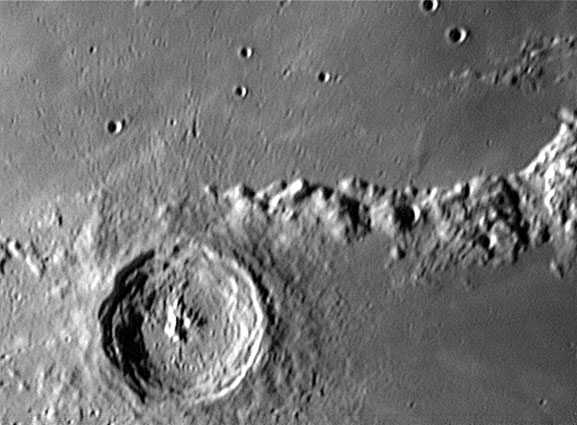November 29, 2015
Overlooked Secondaries
Originally published December 10, 2004
Image Credit: Ralf Vanderbergh |
|
Overlooked Secondaries During the 1940s and 50s, Dinsmore Alter, the Director of Griffith Observatory, was an important expert on the Moon. Alter is most famous for his reports of obscurations in Alphonsus. His beliefs about the Moon were rather typical of the period - that is they were wrong. Alter thought that most lunar craters were volcanic calderas. Gene Shoemaker's convincing analysis that the rays of Copernicus resulted from ejecta thrown out by a powerful impact made Alter accept an impact origin for rayed craters, but not for non-rayed craters such as Eratosthenes. But, although Alter didn't know it, Eratosthenes does have faint rays, and as Ralf's image clearly illustrates, it also has secondary crater chains. It is incomprehensible that Alter did not notice that Eratosthenes is nearly identical morphologically to Copernicus and other large rayed craters. But a strongly held world-view (i.e. craters are volcanic) makes commonsense evaporate! Technical Details: Related Links: Yesterday's LPOD: A Long Valley Tomorrow's LPOD: A New (Old) Lunar Atlas |
|
Author & Editor: |
COMMENTS?
Register, Log in, and join in the comments.




